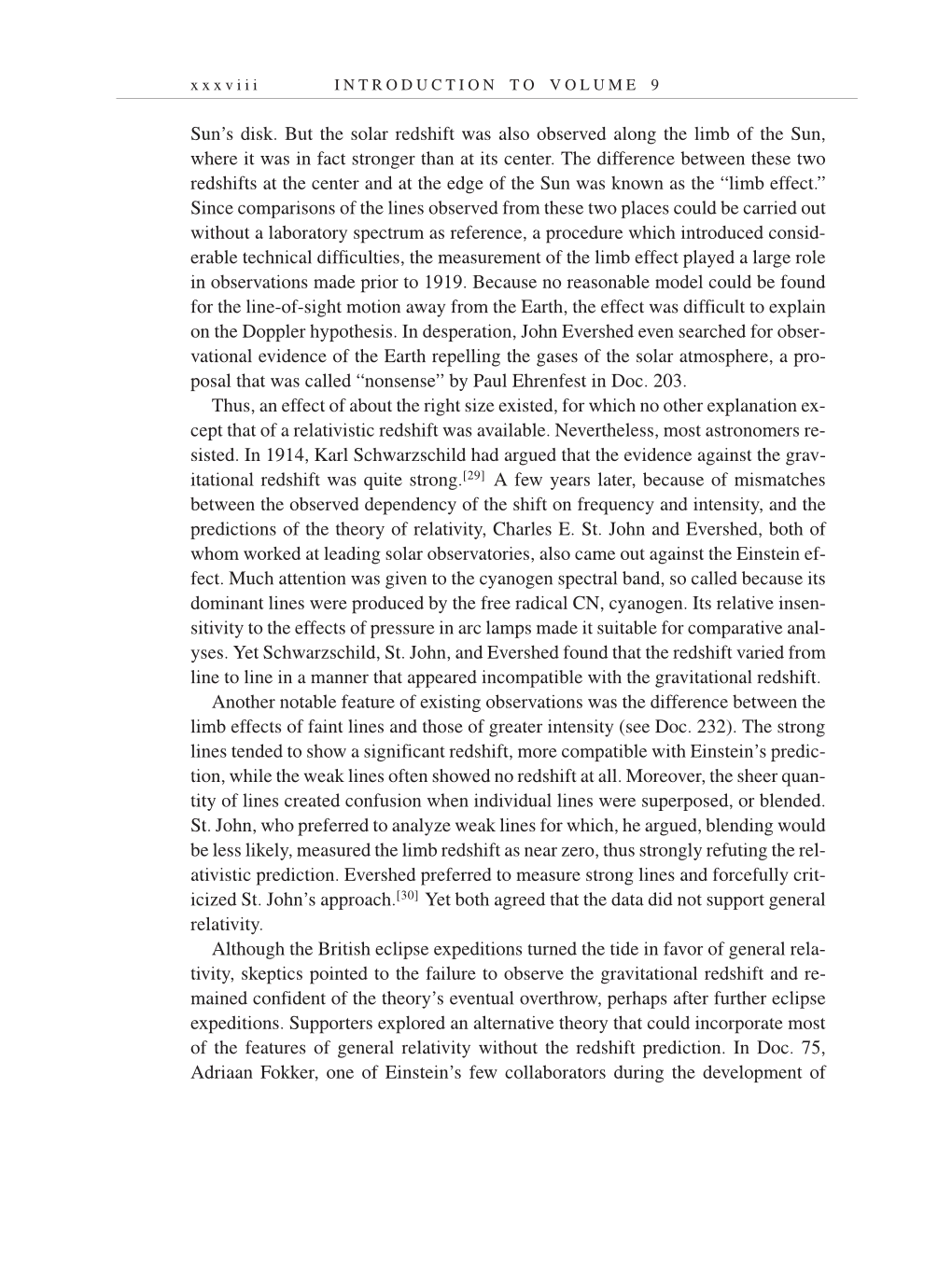x x x v i i i I N T R O D U C T I O N T O V O L U M E 9
Sun’s disk. But the solar redshift was also observed along the limb of the Sun,
where it was in fact stronger than at its center. The difference between these two
redshifts at the center and at the edge of the Sun was known as the “limb effect.”
Since comparisons of the lines observed from these two places could be carried out
without a laboratory spectrum as reference, a procedure which introduced consid-
erable technical difficulties, the measurement of the limb effect played a large role
in observations made prior to 1919. Because no reasonable model could be found
for the line-of-sight motion away from the Earth, the effect was difficult to explain
on the Doppler hypothesis. In desperation, John Evershed even searched for obser-
vational evidence of the Earth repelling the gases of the solar atmosphere, a pro-
posal that was called “nonsense” by Paul Ehrenfest in Doc. 203.
Thus, an effect of about the right size existed, for which no other explanation ex-
cept that of a relativistic redshift was available. Nevertheless, most astronomers re-
sisted. In 1914, Karl Schwarzschild had argued that the evidence against the grav-
itational redshift was quite
strong.[29]
A few years later, because of mismatches
between the observed dependency of the shift on frequency and intensity, and the
predictions of the theory of relativity, Charles E. St. John and Evershed, both of
whom worked at leading solar observatories, also came out against the Einstein ef-
fect. Much attention was given to the cyanogen spectral band, so called because its
dominant lines were produced by the free radical CN, cyanogen. Its relative insen-
sitivity to the effects of pressure in arc lamps made it suitable for comparative anal-
yses. Yet Schwarzschild, St. John, and Evershed found that the redshift varied from
line to line in a manner that appeared incompatible with the gravitational redshift.
Another notable feature of existing observations was the difference between the
limb effects of faint lines and those of greater intensity (see Doc. 232). The strong
lines tended to show a significant redshift, more compatible with Einstein’s predic-
tion, while the weak lines often showed no redshift at all. Moreover, the sheer quan-
tity of lines created confusion when individual lines were superposed, or blended.
St. John, who preferred to analyze weak lines for which, he argued, blending would
be less likely, measured the limb redshift as near zero, thus strongly refuting the rel-
ativistic prediction. Evershed preferred to measure strong lines and forcefully crit-
icized St. John’s
approach.[30]
Yet both agreed that the data did not support general
relativity.
Although the British eclipse expeditions turned the tide in favor of general rela-
tivity, skeptics pointed to the failure to observe the gravitational redshift and re-
mained confident of the theory’s eventual overthrow, perhaps after further eclipse
expeditions. Supporters explored an alternative theory that could incorporate most
of the features of general relativity without the redshift prediction. In Doc. 75,
Adriaan Fokker, one of Einstein’s few collaborators during the development of
